Zhihao Cao
MCGS-SLAM: A Multi-Camera SLAM Framework Using Gaussian Splatting for High-Fidelity Mapping
Sep 17, 2025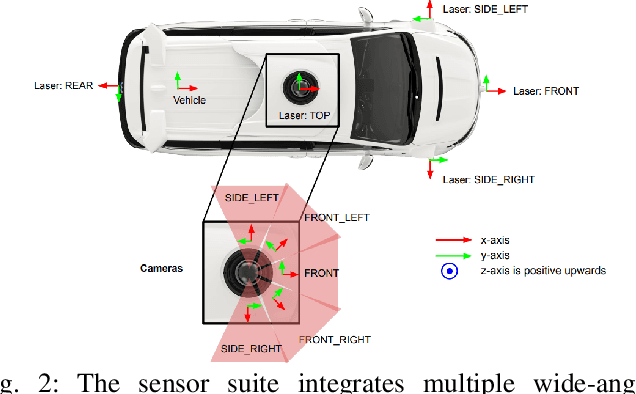
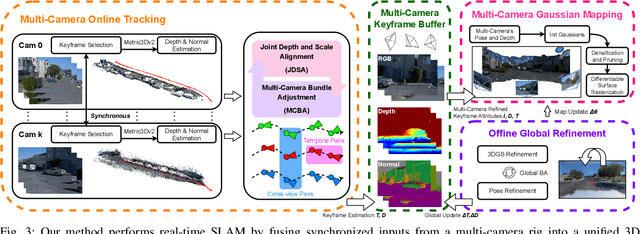
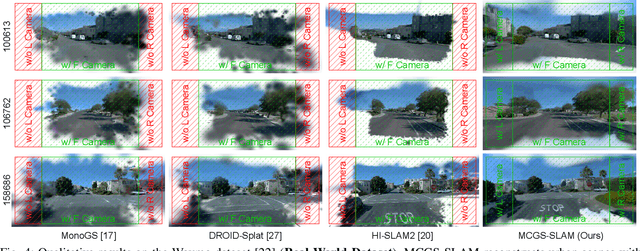
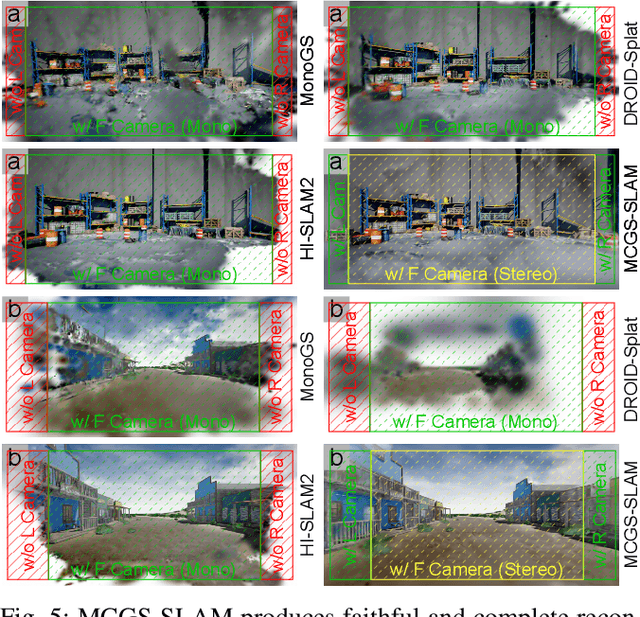
Abstract:Recent progress in dense SLAM has primarily targeted monocular setups, often at the expense of robustness and geometric coverage. We present MCGS-SLAM, the first purely RGB-based multi-camera SLAM system built on 3D Gaussian Splatting (3DGS). Unlike prior methods relying on sparse maps or inertial data, MCGS-SLAM fuses dense RGB inputs from multiple viewpoints into a unified, continuously optimized Gaussian map. A multi-camera bundle adjustment (MCBA) jointly refines poses and depths via dense photometric and geometric residuals, while a scale consistency module enforces metric alignment across views using low-rank priors. The system supports RGB input and maintains real-time performance at large scale. Experiments on synthetic and real-world datasets show that MCGS-SLAM consistently yields accurate trajectories and photorealistic reconstructions, usually outperforming monocular baselines. Notably, the wide field of view from multi-camera input enables reconstruction of side-view regions that monocular setups miss, critical for safe autonomous operation. These results highlight the promise of multi-camera Gaussian Splatting SLAM for high-fidelity mapping in robotics and autonomous driving.
Smart Help: Strategic Opponent Modeling for Proactive and Adaptive Robot Assistance in Households
Apr 13, 2024



Abstract:Despite the significant demand for assistive technology among vulnerable groups (e.g., the elderly, children, and the disabled) in daily tasks, research into advanced AI-driven assistive solutions that genuinely accommodate their diverse needs remains sparse. Traditional human-machine interaction tasks often require machines to simply help without nuanced consideration of human abilities and feelings, such as their opportunity for practice and learning, sense of self-improvement, and self-esteem. Addressing this gap, we define a pivotal and novel challenge Smart Help, which aims to provide proactive yet adaptive support to human agents with diverse disabilities and dynamic goals in various tasks and environments. To establish this challenge, we leverage AI2-THOR to build a new interactive 3D realistic household environment for the Smart Help task. We introduce an innovative opponent modeling module that provides a nuanced understanding of the main agent's capabilities and goals, in order to optimize the assisting agent's helping policy. Rigorous experiments validate the efficacy of our model components and show the superiority of our holistic approach against established baselines. Our findings illustrate the potential of AI-imbued assistive robots in improving the well-being of vulnerable groups.
Simple But Effective: Rethinking the Ability of Deep Learning in fNIRS to Exclude Abnormal Input
Feb 28, 2024Abstract:Functional near-infrared spectroscopy (fNIRS) is a non-invasive technique for monitoring brain activity. To better understand the brain, researchers often use deep learning to address the classification challenges of fNIRS data. Our study shows that while current networks in fNIRS are highly accurate for predictions within their training distribution, they falter at identifying and excluding abnormal data which is out-of-distribution, affecting their reliability. We propose integrating metric learning and supervised methods into fNIRS research to improve networks capability in identifying and excluding out-of-distribution outliers. This method is simple yet effective. In our experiments, it significantly enhances the performance of various networks in fNIRS, particularly transformer-based one, which shows the great improvement in reliability. We will make our experiment data available on GitHub.
Calibration of Deep Learning Classification Models in fNIRS
Feb 23, 2024



Abstract:Functional near-infrared spectroscopy (fNIRS) is a valuable non-invasive tool for monitoring brain activity. The classification of fNIRS data in relation to conscious activity holds significance for advancing our understanding of the brain and facilitating the development of brain-computer interfaces (BCI). Many researchers have turned to deep learning to tackle the classification challenges inherent in fNIRS data due to its strong generalization and robustness. In the application of fNIRS, reliability is really important, and one mathematical formulation of the reliability of confidence is calibration. However, many researchers overlook the important issue of calibration. To address this gap, we propose integrating calibration into fNIRS field and assess the reliability of existing models. Surprisingly, our results indicate poor calibration performance in many proposed models. To advance calibration development in the fNIRS field, we summarize three practical tips. Through this letter, we hope to emphasize the critical role of calibration in fNIRS research and argue for enhancing the reliability of deep learning-based predictions in fNIRS classification tasks. All data from our experimental process are openly available on GitHub.
Tree Recognition APP of Mount Tai Based on CNN
Jan 23, 2019

Abstract:Mount Tai has abundant sunshine, abundant rainfall and favorable climatic conditions, forming dense vegetation with various kinds of trees. In order to make it easier for tourists to understand each tree and experience the culture of Mount Tai, this paper develops an App for tree recognition of Mount Tai based on convolution neural network (CNN), taking advantage of CNN efficient image recognition ability and easy-to-carry characteristics of Android mobile phone. The APP can accurately identify several common trees in Mount Tai, and give a brief introduction for tourists.
Image retrieval method based on CNN and dimension reduction
Jan 13, 2019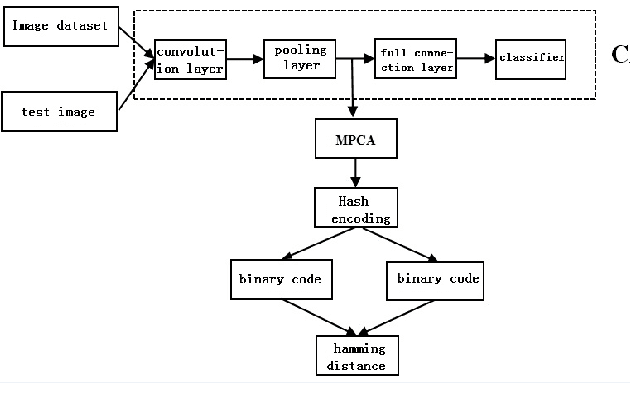
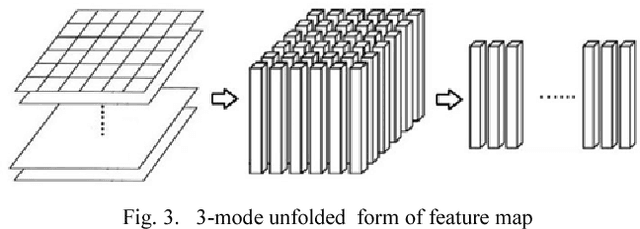

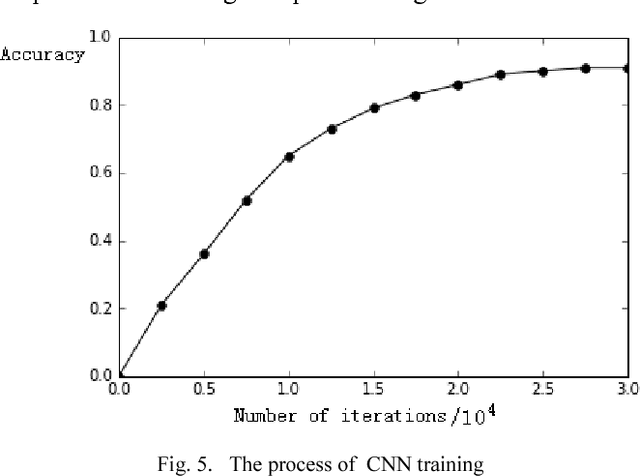
Abstract:An image retrieval method based on convolution neural network and dimension reduction is proposed in this paper. Convolution neural network is used to extract high-level features of images, and to solve the problem that the extracted feature dimensions are too high and have strong correlation, multilinear principal component analysis is used to reduce the dimension of features. The features after dimension reduction are binary hash coded for fast image retrieval. Experiments show that the method proposed in this paper has better retrieval effect than the retrieval method based on principal component analysis on the e-commerce image datasets.
Image Recognition of Tea Leaf Diseases Based on Convolutional Neural Network
Jan 09, 2019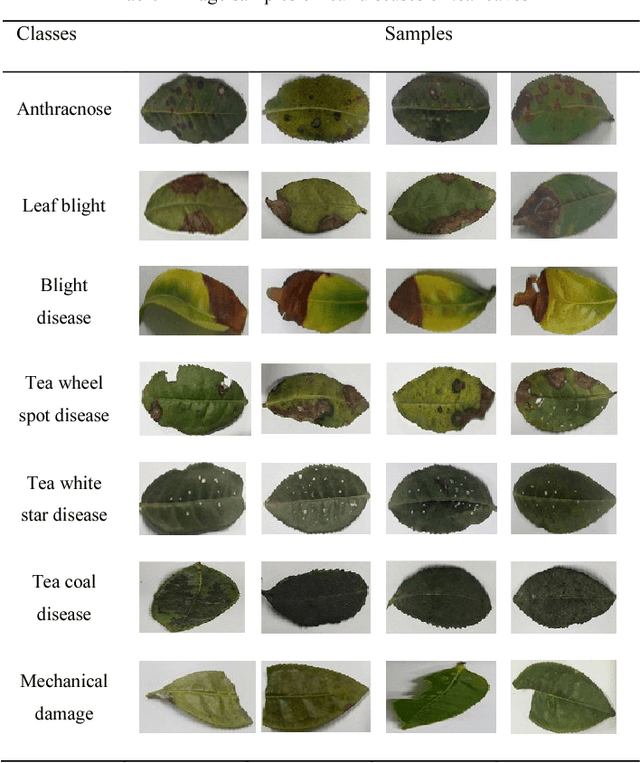
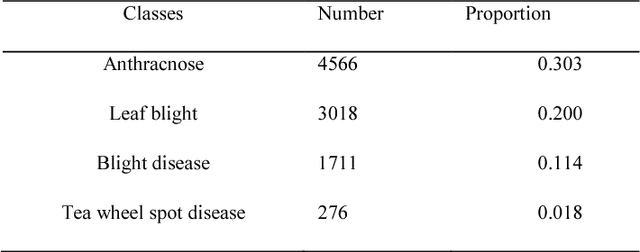

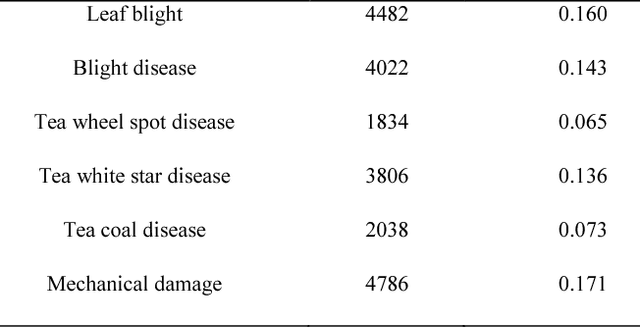
Abstract:In order to identify and prevent tea leaf diseases effectively, convolution neural network (CNN) was used to realize the image recognition of tea disease leaves. Firstly, image segmentation and data enhancement are used to preprocess the images, and then these images were input into the network for training. Secondly, to reach a higher recognition accuracy of CNN, the learning rate and iteration numbers were adjusted frequently and the dropout was added properly in the case of over-fitting. Finally, the experimental results show that the recognition accuracy of CNN is 93.75%, while the accuracy of SVM and BP neural network is 89.36% and 87.69% respectively. Therefore, the recognition algorithm based on CNN is better in classification and can improve the recognition efficiency of tea leaf diseases effectively.
 Add to Chrome
Add to Chrome Add to Firefox
Add to Firefox Add to Edge
Add to Edge